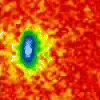
 |
A New Model Course in Quantum Mechanics for Scientists and Engineers |
 |
NSF grant DUE-9652877 |
Understanding quantum mechanics (QM) is of growing importance to engineers, chemists, and biologists, as well as to physicists of all disciplines. Fields where this understanding is of particular importance include mesoscopic systems, photonics, molecular genetics, and medical diagnostics. However, QM is a difficult and abstract subject and there has been little success in teaching it at all levels.
In response to this situation, we propose to conduct systematic investigations into student understanding of QM and develop instructional materials based on this research for courses in QM. While most research will be conducted in a course for scientists and engineers meant to follow introductory calculus-based physics, we are also interacting with projects at Kansas State (Zollman) and Boston University (Garik). These collaborations allow us to investigate the understanding of fundamental quantum concepts by students in college courses on QM for non-scientists and in high school. The keys to our instructional strategies are:
1. We use the iterative process of physics education research, curriculum development, and instruction. This model of curriculum reform is becoming increasingly valued. However, it has not been applied to QM and few detailed investigations of student understanding of the subject have been previously carried out.
2. We are developing materials that enable students to work constructively in small groups. Numerous studies in physics education have pointed to the need for students to work with one another in a context where they can actively construct an understanding of important fundamental principles instead of listening passively. We are extending this mode of instruction to QM.
3. We are using instructional strategies that use modern technology. Modern technology has dramatically increased the resources for physics education. Simulations allow students to "observe" phenomena and probe the effect of different parameters in ways not otherwise possible. Inexpensive simple quantum devices such as solar cells and LED's are readily available. Although we will not develop any software ourselves, we will develop lessons for using the software developed at KSU and BU and will test its effectiveness for enhancing student learning.
The products of this project include insights into student difficulties in learning QM and a series of 12 group-learning lessons (tutorials) on fundamental concepts. The products of this project include assessment tools for QM classes (interview protocols, open-ended questions, and a multiple-choice concept inventory) and evaluations of relevant educational software. Once they are vetted by research, our lessons and assessment tools will be distributed on the World Wide Web.
We expect that the impact of both the research and the curriculum development will be substantial from the introductory to the advanced level, for physicists, engineers, and other scientists. We also suspect that the student-centered nature of the work will aid in reaching a more diverse population than those that traditionally succeed in these fields.
 |
Go back to the Quantum Homepage |
Maintained by University of Maryland PERG
Comments and questions may be directed to
E. F. Redish
Last modified July 1, 2002